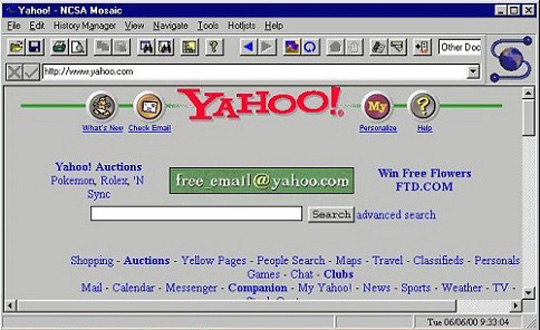The web has transformed how we do things. The first website went online nearly three decades ago and since that time, there has been a huge transformation. It is now possible for people to share information easily and efficiently. The evolution of the web has been marked by evolution in web design. Some of the earliest design techniques were rudimentary compared to modern design techniques. The evolution of the web has indeed been remarkable. This evolution can be summarized in a couple of stages.
Let us look at the various stages that the web has evolved over the years.
The Early Years

In the early years of web design (the Early 1990s), there was no much differences between web pages and the overall computer interface pages. With under 50 million people actively using the web by 1995, the design was basic with rows of text dominating the web pages. The first web publishing language, Hypertext Markup Language (HTML) was developed during this era and it gave the websites their first structure. HTML was quite limited in scope because it was developed to mostly design web pages dominated by text. Vertical scrolling was also a feature that was developed during this era as were the iconic blue underlined page links.
The Second Generation
The second generation in web design came during the mid-1990s. This stage was defined by the development of increased functionality in web pages. One of the main tools that were adopted to the web were tables. Tables acted as great tools for creating structure and character. Tables were also the first step to an improved interface. Speaking of interface, this era also saw the adoption of a Graphical User Interface (GUI) system that allowed designers to use images and icons on websites. The GUI is also responsible for the modern icons that you see on any web page, Android VPN program or even web app.
The Flash Design Years

The late 1990s were characterized by the early incorporation of Flash into web pages. Flash was revolutionary because it heralded a new era of multimedia usage in websites. Music, video, and animations were also effectively incorporated on websites thus enhancing the beauty and functionality of websites. Different colors, interactive tools, and decorations all became possible because of Flash. This era also so the development of bright and often distracting images. Flash on a website would go on to dominate the web for over a decade before it was finally deemed to be outdated.
The Development and Use of CSS
The Cascading Style Sheets (CSS) language was created to give HTML websites some style. While Flash was able to achieve milestones in terms of incorporating multimedia features to websites, there was still an undefined and loose structure apparent in websites. CSS was thus designed to address this issue and it did this by defining the use of fonts, colors, and various other elements. CSS was thus a program that was specifically meant to improve the presentation aspect of websites. Because of the improvements that came with CSS, designers now started developing templates which marked the beginning of style versatility on the web.
Responsive Design

After the dominance of CSS and HTML for many years, a time came when these two would need to be used in dynamic ways. The 2010s saw the development of the first web pages specifically meant for mobile phones. With the rise of smartphone and tablet usage, the web pages were no longer designed solely for the PC market. Because of this, new techniques of designing would have to be implemented. The Responsive Web Design was created during this time with an aim of creating sites that would be consumed easily using all kinds of devices. The responsive design ultimately led to the flat design. Flat websites are characterized by minimalism and effectiveness. In overall, the 2010s have marked the full evolution of web design.
The Future of Web Design
The web is now used by over 3.5 billion. This means that the growth of the internet has been astronomical over a very short period. Considering how technology has also grown very quickly, it would not be wrong to assume that web design has seen its lustrous days. Web design thus will no longer be about features but specialization. Web design in the future will thus focus on how each individual website is suited to its function.
